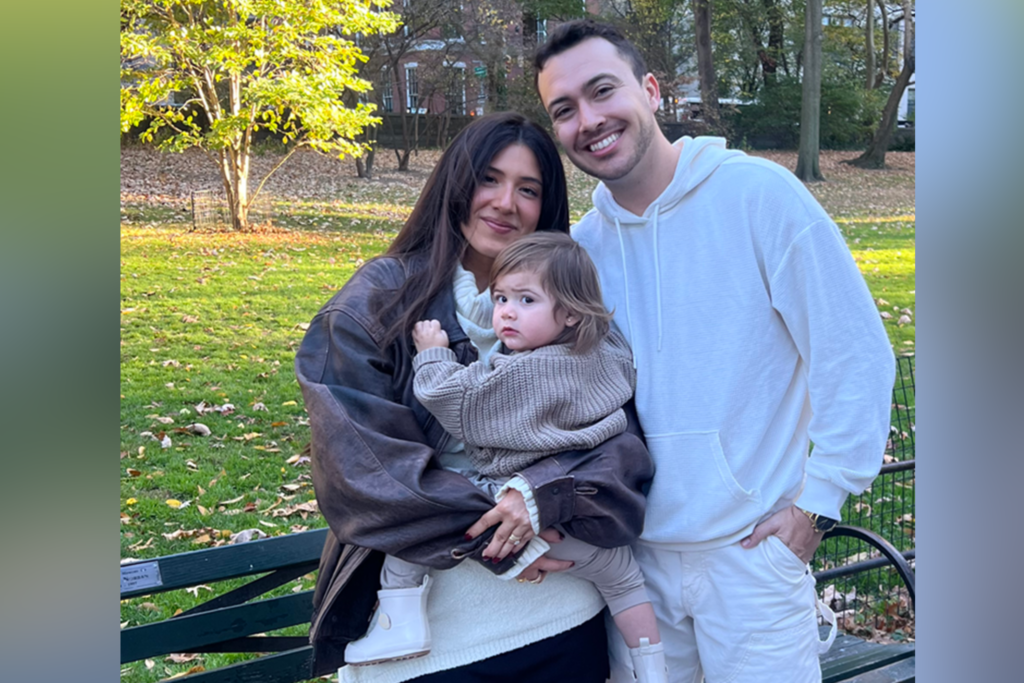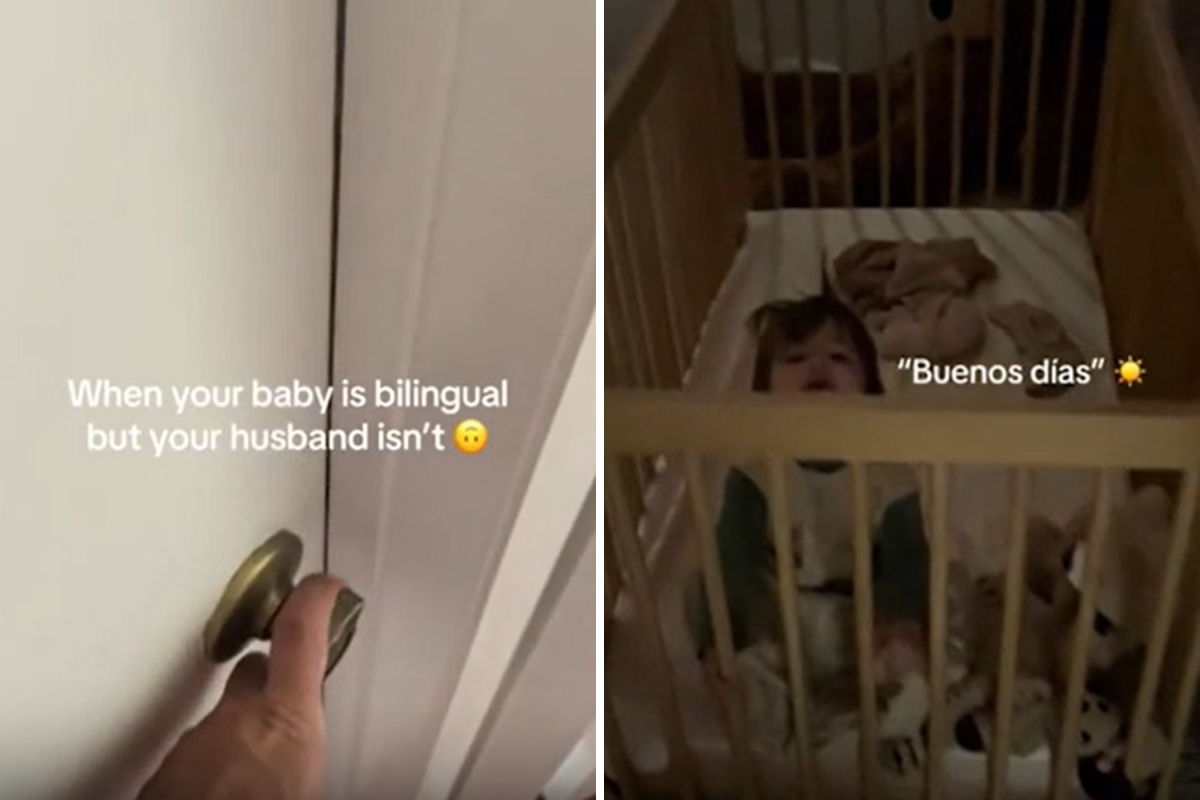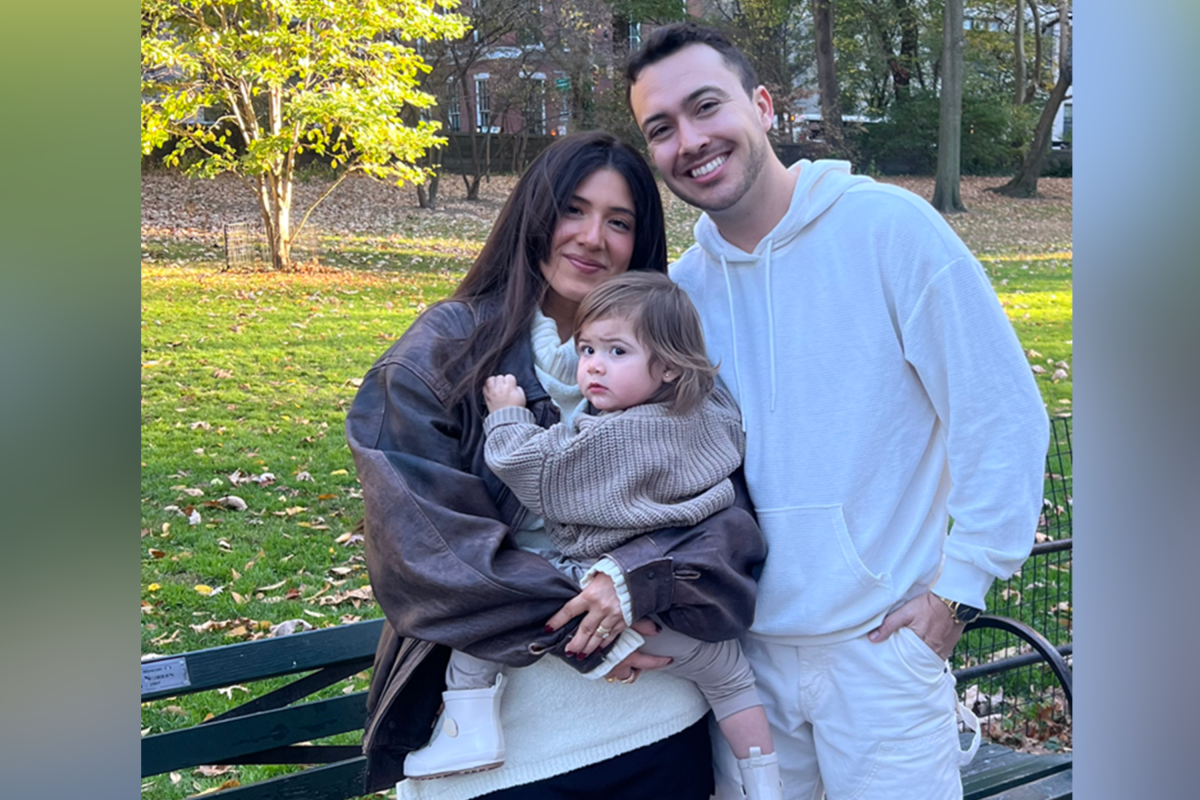
Dad Enters Toddler’s Room To Wake Her, but There’s a Problem
Every day is a learning experience for parents, especially when their child is bilingual, and they only speak one language. Take, for example, Shane Krobatsch, 29, who recently went viral on TikTok.
On November 20, he recorded his 16-month-old daughter, Camila, greeting him in Spanish. In the clip, she can be heard saying, “Buenos días,” which means “good morning.”
Krobatsch’s response, however, left internet viewers in stitches when he asked the toddler, “What are you saying?”
Newsweek spoke to his partner, Melissa Longoria, 29, who is originally from Bogotá, Colombia, about the short and sweet interaction that has racked up more than 5.6 million views.

From left: A screenshot from the video showing the dad opening Camila’s door; and then the baby greets him in Spanish. The mom told Newsweek that her partner has been trying to learn Spanish.
TikTok/@melissaa.longoria
“He has been learning to understand Spanish over our years together; however, now that we have a baby, he is slowly learning to speak Spanish along with her,” Longoria said.
The stay-at-home mom is determined to teach Camila both English and Spanish so she can be fluent by the time she starts school. To achieve this, she speaks only Spanish during the week, while Krobatsch, who works in digital marketing, interacts with their daughter in English on weekends.

Melissa Longoria holds Camila next to her partner Shane Krobatsch outdoors. TikTok users can’t believe he didn’t know the Spanish greeting.
Melissa Longoria
“Our baby is only young, so she only says a few words so far but is very good at understanding both languages,” Longoria shared.
“Her small vocabulary includes both English and Spanish words, and she responds to questions in both languages. I use a lot of repetition in both English and Spanish when teaching her something new, and I find positive affirmations really boost her confidence.”
Longoria said she also incorporates language-learning into daily activities.
She added: “We watch English shows like Ms. Rachel, and I sometimes repeat what she says but in Spanish. We read English and Spanish books, and I try my hardest to say everything in both languages so she can catch onto both.”
The Science of Bilingual Learning
Earlier this year, researchers from the Department of Psychology, University of Western Ontario, Canada, carried out a study that involved children (ages 8 to 10) and adults.
The results revealed children are better at learning languages than adults in the long term, but scientists are still exploring whether kids actually learn languages faster in the moment.
Participants were shown phrases like “gi lion,” where the first word (a made-up article, like “gi”) hinted at whether the second word was living or not. While both groups eventually learned the pattern, children picked it up faster and were better at applying it to new, made-up words. Adults needed more time to reach the same understanding.
These findings highlight children’s unique edge in learning languages, especially during real-time exposure, which researchers attribute to the brain’s heightened adaptability in early life.
TikTok Reacts
Interestingly, Krobatsch’s mother is Colombian, but he has yet to become fluent in Spanish.
The text overlay on the viral TikTok video shared to @melissaa.longoria humorously reads, “When your baby is bilingual but your husband isn’t,” with the caption adding, “He’s learning with her.”
The clip has left TikTok users both shocked and amused. One commenter, whose remark received 97,000 likes, wrote, “He doesn’t even know buenos días??” Another commented, “Baby is like, ‘We speak Spanish in this house.'”
“This is the most funny and adorable thing I’ve seen,” posted a third commenter.
If you have a family dilemma, let us know via life@newsweek.com. We can ask experts for advice, and your story could be featured on Newsweek.